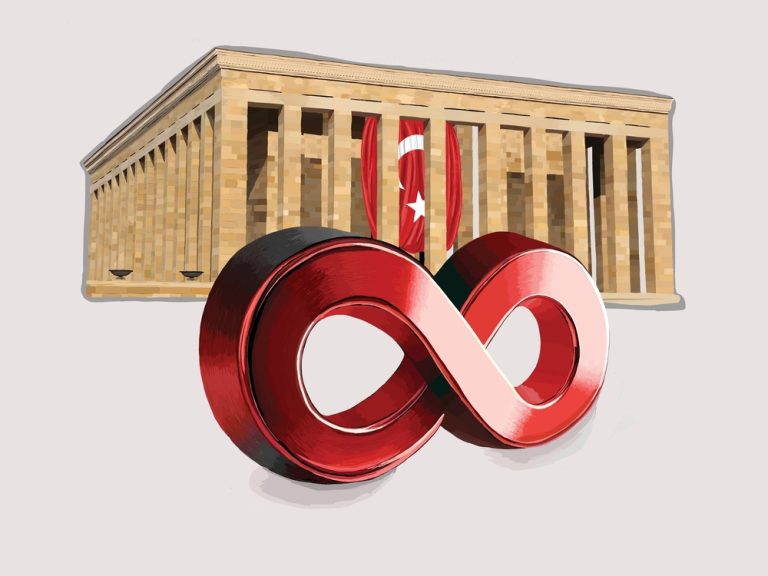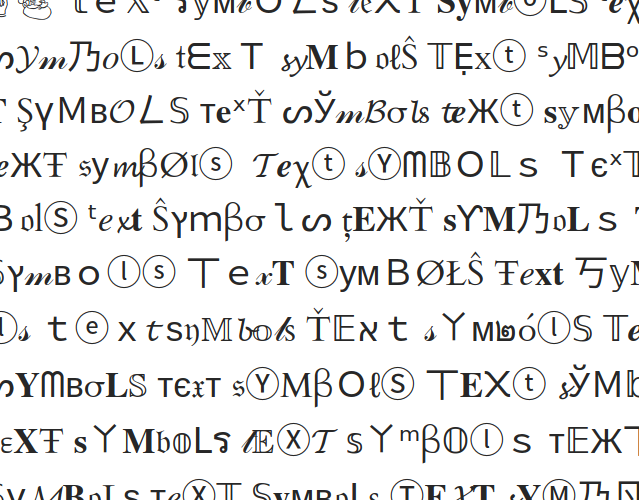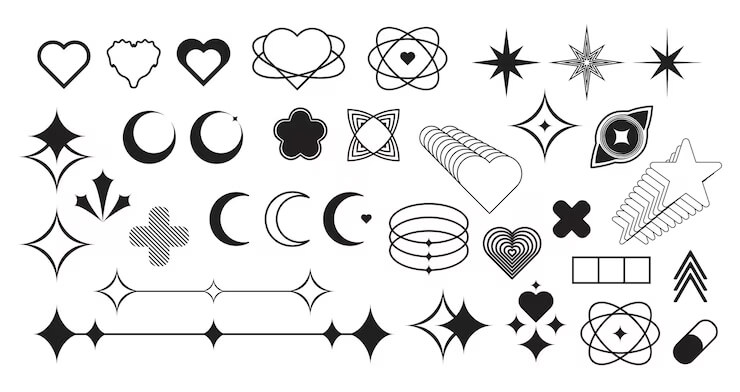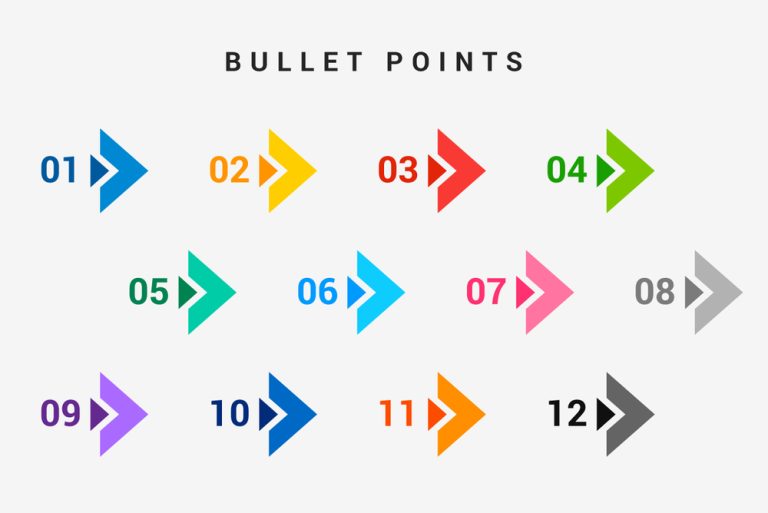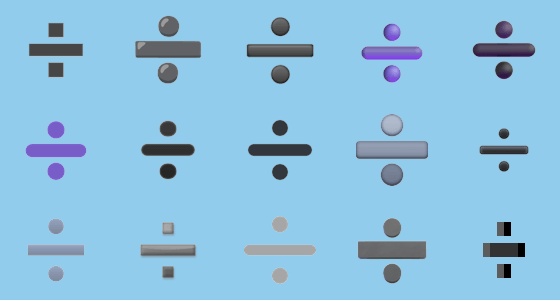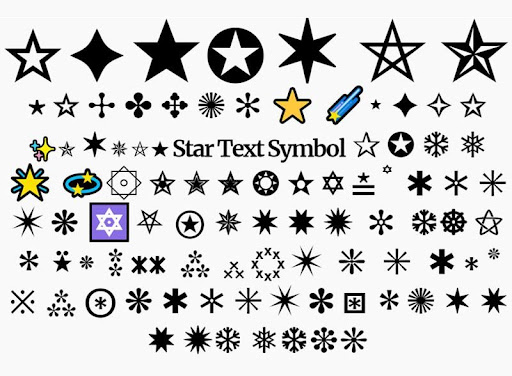
Looking to sprinkle a little love into your messages or designs? You’re in the right place! 💖 Here you’ll find a charming collection of heart symbols ready to copy and paste—perfect for adding warmth to your social media, texts, or creative projects.
From classic reds ❤️ to playful yellows 💛 and everything in between, there’s a heart for every mood and moment. Browse through, pick your favorites, and spread the love effortlessly!
Heart Symbols ❤
The heart symbol ❤️ is one of the most recognized icons worldwide, instantly evoking feelings of love, care, and connection. Beyond just representing the physical organ, the heart shape has come to symbolize emotions, relationships, and compassion across cultures.
Its popularity in culture, art, and communication stems from its simple yet powerful ability to express deep feelings without words. From ancient carvings and medieval art to modern emojis and tattoos, the heart symbol continues to be a universal language of affection and human connection.

❤ Heart Emoji to Copy and Paste
The classic red heart is perhaps the most iconic and instantly recognizable heart symbol. It universally represents love, passion, and deep emotional connection. Whether exchanged between romantic partners, family members, or close friends, the red heart conveys warmth, affection, and sincere feelings.
Its vibrant red color is closely tied to the symbolism of blood and life, making it a powerful emblem of vitality and heartfelt emotion. In messages, social media, and art, the red heart serves as a simple yet profound way to express love without the need for words.
Because of its strong association with romance and desire, the red heart is often used in celebrations like Valentine’s Day, weddings, and anniversaries. It remains a timeless symbol that speaks directly to the universal human experience of caring and connection.
♥, ❥ Aesthetic Heart Text Symbols
Beyond colorful emojis, aesthetic heart text symbols offer a charming way to express love and affection using simple characters. These symbols are popular in texting, social media bios, and digital art for their elegant and minimalistic style.
Common text-based hearts include shapes like <3, which resembles a tilted heart, and ♡, a hollow heart often used to convey gentler feelings or a delicate touch. Other variations like ♥, ❥, and ღ add flair and personality to messages while keeping them visually appealing.
Aesthetic heart symbols are especially favored in online communities that appreciate creative typography and subtle emotional expression. They bridge the gap between classic text and graphic emojis, allowing users to personalize their digital conversations with stylish simplicity.
Infinity Heart Symbols
The infinity heart symbol combines two powerful icons: the heart, representing love and affection, and the infinity sign (∞), symbolizing eternity and endlessness. Together, they convey a message of everlasting love, infinite connection, and unbreakable bonds.
This symbol is popular in jewelry designs, tattoos, and art to express timeless relationships—whether romantic, familial, or friendships that are meant to last forever. It represents a love that has no limits or end, making it a favorite choice for couples celebrating lifelong commitment.
In digital communication, the infinity heart is often shared to emphasize unwavering loyalty and perpetual care. Its elegant simplicity makes it a meaningful and visually appealing symbol for expressing deep, enduring emotions.
Broken heart 💔 — heartbreak or sadness
The broken heart symbol vividly captures the pain of loss, heartbreak, and emotional sorrow. It represents moments when love is fractured, relationships end, or deep sadness overwhelms the heart. Unlike the classic red heart, the broken heart conveys vulnerability and grief.
Widely used in texts, social media, and art, this symbol helps people express feelings of disappointment, heartbreak, or mourning without needing to explain in words. It often appears in messages about breakups, unrequited love, or difficult emotional experiences.
Despite its somber meaning, the broken heart also acknowledges the reality of human emotions and healing. Sharing this symbol can foster empathy, connection, and understanding during tough times.
Sparkling heart 💖 — admiration and affection
The sparkling heart emoji 💖 is a vibrant symbol used to convey admiration, affection, and a sense of special appreciation. Unlike the classic solid red heart, the sparkling heart adds a layer of excitement and glamour, making it perfect for moments of joy, celebration, and admiration.
This symbol is often used to express admiration for someone’s kindness, beauty, or achievements. It shines brightly with tiny sparkles that suggest something precious and cherished, elevating the simple concept of love to a more dazzling and joyful level.
In social media and texting, the sparkling heart is popular in compliments, romantic messages, and even friendly exchanges. It adds warmth and enthusiasm, showing that the sender feels genuinely touched or impressed by the recipient.
Artists and designers often use the sparkling heart to add flair and energy to their works, emphasizing beauty, positivity, and emotional sparkle. It’s a symbol that brightens conversations and highlights moments when words alone aren’t enough to capture the feelings of admiration and affection.
Two hearts 💕 — romantic connection or friendship
The two hearts emoji 💕 symbolizes the beautiful bond between two people, whether it’s romantic love or deep friendship. It often represents the feeling of closeness, harmony, and mutual affection that two hearts can share. Unlike a single heart, two hearts suggest a connection — a pairing that speaks to togetherness and shared emotions.
In romantic contexts, the two hearts convey intimacy, budding love, and the warmth of a relationship blossoming or flourishing. It’s a popular way to show affection between couples, symbolizing not just love, but also the joy of being united with someone special.
But the two hearts aren’t limited to romance. Friends use this emoji to celebrate strong friendships built on trust, support, and genuine care. It expresses a platonic love — that feeling of deep connection that isn’t romantic but just as meaningful.
The visual pairing of two hearts suggests balance and companionship. It’s often used in messages that celebrate anniversaries, friendships, or moments where two souls feel in sync. Social media posts, texts, and comments frequently feature the two hearts to highlight shared happiness and emotional bonding.
Artists and designers embrace the two hearts as a versatile symbol. It can be playful or profound, simple or ornate — perfect for conveying positive feelings that come from togetherness and love in all its forms.
Other Heart Variations — Black, Blue, Green, and More: Meanings and Symbolism
Hearts come in many colors beyond the classic red, each carrying unique meanings and emotional undertones. These variations allow people to express a wide range of feelings, moods, and messages with greater nuance and creativity.
Black Heart 🖤
The black heart symbolizes sorrow, grief, or dark humor. It can express mourning or emotional pain but also be used playfully to show a rebellious, edgy vibe. Sometimes, it represents a deep, mysterious kind of love or a gothic aesthetic.
Blue Heart 💙
The blue heart often represents trust, loyalty, and peace. It can signify deep friendship, calm affection, or support for causes like autism awareness or police appreciation. It’s a cooler, more serene expression of love and care.
Green Heart 💚
The green heart symbolizes growth, health, and harmony. It’s commonly associated with nature, environmentalism, and renewal. It can also indicate jealousy or envy but is mostly used to show a fresh, caring love, especially for friends and family.
Yellow Heart 💛
Yellow hearts stand for happiness, friendship, and positivity. They radiate warmth, cheerfulness, and a joyful spirit. Perfect for expressing platonic love and sunny, optimistic vibes.
Purple Heart 💜
Purple hearts symbolize luxury, creativity, and compassion. They often represent romantic love with a mystical or spiritual twist. Purple can also indicate honor and pride, famously used for military valor in the Purple Heart medal.
White Heart 🤍
The white heart conveys purity, innocence, and peace. It’s often used in contexts of sympathy or to represent a pure, unconditional love. White hearts are also popular in minimalist aesthetics.
Orange Heart 🧡
Orange hearts suggest enthusiasm, fascination, and encouragement. They’re vibrant and warm but less intense than red hearts, making them great for friendly affection and energy.
History of Heart Symbols
The heart symbol’s origins are mysterious and fascinating. Early depictions date back thousands of years, but interestingly, the shape we recognize today doesn’t closely resemble the actual human heart. Some scholars believe it may have been inspired by the shape of a seed, plant leaf, or even the silphium plant — an ancient herb used for medicinal and contraceptive purposes in Greek and Roman times.
In ancient civilizations, the heart was often associated with life and vitality rather than love. For example, the Egyptians believed the heart was the center of thought and emotion, and it played a key role in their afterlife beliefs.
As history progressed, the shape evolved through medieval Europe, where it began to appear in art and manuscripts as a symbol of romantic love and devotion. By the Middle Ages, the stylized heart had become closely linked to the idea of courtly love, especially through the influence of poetry and chivalric traditions.
The transition from a symbol of life or vitality to one of love and emotion was gradual but enduring. Over centuries, the heart shape became a universal emblem of affection, passion, and emotional connection — meanings that continue strongly to this day.
Heart Symbols in Modern Communication
Heart symbols have become a universal language in the digital age, especially through texting and social media. Emojis like ❤️, 💕, and 💖 are frequently used to express emotions quickly and visually, making conversations more colorful and meaningful without relying solely on words.
In texting, a single heart emoji can say “I love you,” “Thank you,” or “I’m thinking of you,” depending on the context. Social media platforms amplify this effect, where hearts are often used as reactions or likes to show appreciation, agreement, or emotional support with just a tap or click.
However, the interpretation of heart symbols can vary widely across cultures. For instance, while red hearts universally signal love and passion, other colors or styles might have different meanings. In some cultures, a black heart might be seen as gothic or humorous, while in others it may be associated with mourning. The purple heart could represent honor or spirituality in certain regions, but creativity or luxury in others.
This diversity in meaning makes heart symbols a rich form of non-verbal communication. They help convey feelings that are sometimes hard to put into words—comfort, sadness, joy, or admiration—bridging gaps where language or tone might fall short. Heart emojis often soften messages, making interactions warmer and more personal.
Beyond individual chats, heart symbols also foster community and connection online. Campaigns and causes use colored hearts to raise awareness, and social groups adopt specific heart emojis as part of their identity. The visual simplicity of hearts allows for immediate emotional resonance, making them powerful tools for digital empathy and expression.
In short, heart symbols have evolved into more than just cute icons—they are vital emotional shortcuts in modern communication. They transcend language barriers, enrich online interactions, and help people share feelings authentically in an increasingly digital world.
Heart Symbols in Art and Design
The heart symbol is a timeless motif in art and design, appearing across a vast spectrum of creative fields—from personal tattoos to global branding. Its instantly recognizable shape carries deep emotional resonance, making it a favorite choice for artists and designers seeking to communicate love, passion, and connection.
Tattoos often feature heart symbols as intimate expressions of love, memory, or identity. Whether a classic red heart, a broken heart, or a heart entwined with other elements like flowers or banners, tattoos use this symbol to mark personal stories and emotional milestones. The heart’s versatility allows it to be rendered in styles ranging from minimalist line art to intricate realism.
Jewelry frequently incorporates heart designs to symbolize affection and commitment. Heart-shaped pendants, rings, and bracelets are classic gifts representing love and friendship. Designers creatively adapt the heart shape, using precious metals, gemstones, and modern aesthetics to keep the symbol both timeless and trendy.
In fashion, heart motifs appear in patterns, prints, and accessories. They add a playful or romantic flair to clothing and footwear, appealing to diverse audiences. From haute couture to casual wear, hearts help designers tap into universal feelings, making collections emotionally appealing and memorable.
Home decor benefits from the heart’s warm symbolism as well. Wall art, cushions, ceramics, and decorative objects featuring heart shapes add a cozy, loving ambiance to living spaces. This symbolism creates environments that feel welcoming and emotionally rich, connecting spaces with personal meaning.
Several famous artworks and logos highlight the heart symbol’s power. Iconic pop artist Keith Haring used heart imagery in his vibrant street art to convey love and unity. Brands like I❤️NY and companies such as Airbnb integrate heart elements in their logos to evoke positive emotions and customer loyalty. These examples demonstrate how hearts can distill complex values into simple, memorable visuals.
In graphic design and branding, the heart symbol plays a crucial role. It conveys warmth, trust, and emotional appeal—qualities vital for building brand identity. Marketers use hearts to humanize brands, foster customer engagement, and create instant emotional connections. The heart’s shape also lends itself well to clean, recognizable icons and logos, adaptable to digital and print media alike.
Overall, the heart symbol’s rich history and emotional depth make it a cornerstone in art and design. Its enduring appeal lies in its ability to communicate universal human experiences, making it a powerful tool for creative expression and meaningful connection.
Fun Facts and Trivia About Heart Symbols
The heart symbol is so familiar that it’s easy to forget how quirky and fascinating its story really is. Here are some fun facts and trivia that might surprise you!
1. The Heart Shape Isn’t Based on the Human Heart
The classic heart shape we recognize doesn’t actually look like the anatomical human heart. Historians believe it might have originated from the shape of a seedpod, fig leaf, or even the shape of a spade from playing cards!
2. The Oldest Known Heart Symbol Dates Back to Ancient Greece
One of the earliest uses of a heart-like shape appeared on a coin from the ancient Greek city of Cyrene, dating to around 500 BCE. It wasn’t about love yet but may have represented a seed or fruit.
3. The Heart Emoji Was Officially Added in 2010
The first popular heart emoji was introduced as part of Unicode 6.0 in 2010. Since then, dozens of heart variations—colors, styles, and effects—have exploded in use across phones and social media worldwide.
4. Red Hearts and Valentine’s Day Exploded in Popularity Thanks to Printing
The red heart became a mass symbol of romantic love during the Victorian era, when Valentine’s cards with heart motifs were widely printed and exchanged. Before that, the heart symbol had many different meanings!
5. There’s a Guinness World Record for the Largest Human Heart
Not the organ inside the body — the largest human heart-shaped formation was created by thousands of people holding hands in India, setting a world record for the biggest living heart shape.
6. The “I ❤️ NY” Logo Is One of the Most Famous Heart Logos
Created by graphic designer Milton Glaser in 1977, this simple design transformed how cities and brands use the heart symbol to express love and pride.
7. The “Heart” Is One of the Most Common Tattoo Designs
Along with stars and anchors, heart tattoos consistently rank as one of the most popular tattoo motifs worldwide. They’re often combined with names, dates, or banners to tell personal stories.
8. Hearts Have Their Own Playing Card Suit History
The heart suit in playing cards dates back to the late Middle Ages in Europe and originally represented the clergy or the church, symbolizing charity and love.
9. Some Cultures Have Unique Heart Symbol Variations
In Japan, for example, the “kokoro” character (心) represents heart or spirit, often appearing in art and calligraphy with deep philosophical meanings that go beyond romantic love.
10. The Heart Symbol Is Used in Science to Represent “Love for Learning”
In education and psychology, the heart is sometimes used symbolically to represent passion for knowledge, emphasizing the connection between emotion and intellect.
How to Use Heart Symbols Effectively
Heart symbols are powerful tools for expressing emotions, but using them thoughtfully can make your messages more meaningful and appropriate. Here are some tips to help you use heart symbols effectively in various contexts.
Tips for Using Heart Symbols in Personal Messages
-
Match the Emotion: Choose the heart symbol that best fits your feelings. For example, use a classic red heart ❤️ for deep love or passion, and a yellow heart 💛 for friendship and happiness.
-
Keep It Balanced: Don’t overuse hearts in a message—too many can feel overwhelming or insincere. A well-placed heart can emphasize warmth or affection perfectly.
-
Context Matters: Consider your relationship with the person. A heart emoji might be sweet and appreciated in close relationships but could be misunderstood in professional or casual acquaintances.
-
Combine With Words: Hearts complement words but don’t replace clear communication. Use hearts to add emotion, but also say what you mean.
When to Use Different Heart Emojis or Icons
-
Red Heart (❤️): Romantic love, deep affection, or strong emotional connection.
-
Broken Heart (💔): Express sadness, heartbreak, or empathy for difficult situations.
-
Sparkling Heart (💖): Admiration, affection, or excitement.
-
Two Hearts (💕): Romantic connection or close friendship.
-
Black Heart (🖤): Mourning, dark humor, or edgy style.
-
Blue Heart (💙): Loyalty, trust, calm affection, or support for causes.
-
Green Heart (💚): Growth, health, nature, or jealousy (context-dependent).
-
Yellow Heart (💛): Friendship, joy, and positivity.
-
Purple Heart (💜): Compassion, creativity, or honor.
Using Heart Symbols Respectfully in Cross-Cultural Contexts
-
Be Aware of Cultural Differences: Colors and symbols can carry different meanings worldwide. For example, black hearts may be associated with mourning in some cultures but could be seen as playful or rebellious in others.
-
Avoid Over-Familiarity: In formal or cross-cultural communications, using hearts may be misinterpreted as too personal or unprofessional. Use hearts cautiously in professional or unfamiliar settings.
-
Know Your Audience: If you’re unsure how your heart emoji will be received, it’s better to keep your messages simple or ask about preferences.
-
Respect Religious or Traditional Sensitivities: Some cultures might view heart symbols differently depending on religious beliefs or social norms. Being sensitive to these can avoid misunderstandings.
By understanding the meanings and contexts of various heart symbols, you can communicate more clearly and warmly, building stronger personal and social connections.
FAQs
Q1: What are heart symbols and how can I use them?
Heart symbols are special characters (like ❤️, 💕, 💖) used to express love, affection, or emotion in digital communication. You can copy and paste them into social media posts, chats, bios, messages, or anywhere text is accepted.
Q2: How do I copy and paste a heart symbol?
Simply click on the heart symbol you want. It will be copied to your clipboard. Then, right-click and choose “Paste” or press Ctrl + V (Windows) or Cmd + V (Mac) where you want to insert it.
Q3: Are heart symbols compatible with all devices?
Yes, most heart symbols are Unicode characters and are supported across major platforms including Android, iOS, Windows, and macOS. However, visual appearance may vary slightly.
Q4: Can I use heart symbols in Instagram, Facebook, and TikTok bios?
Absolutely! These symbols are popular on all major social platforms. You can paste them in bios, captions, comments, and messages to add emotional or aesthetic appeal.
Q5: Are these symbols free to use?
Yes! All heart symbols on this site are free to copy and use without any restrictions.
Q6: Why do some heart symbols look different on my phone or browser?
Emoji rendering depends on your device and OS. Apple, Google, Microsoft, and Samsung all have slightly different designs for the same heart symbol.
Q7: Can I use multiple heart symbols together?
Yes, you can combine them for more expression like 💖💕💘 or use them in patterns for decoration in messages or bios.
Q8: Do heart symbols work in HTML or code?
Yes. You can use Unicode or HTML codes for heart symbols in web development. For example, ❤ renders as ❤️.
Conclusion
Heart symbols have stood the test of time as powerful icons of love, emotion, and connection. From ancient origins to modern digital conversations, their simple shape carries endless meaning across cultures and contexts. Whether used in art, communication, or design, hearts continue to inspire and unite us by expressing feelings that words alone sometimes cannot.
Embracing heart symbols allows us to share warmth, affection, and understanding in creative ways. So don’t hesitate to explore their many variations and use them to brighten your messages and relationships. After all, a little heart can speak volumes.

